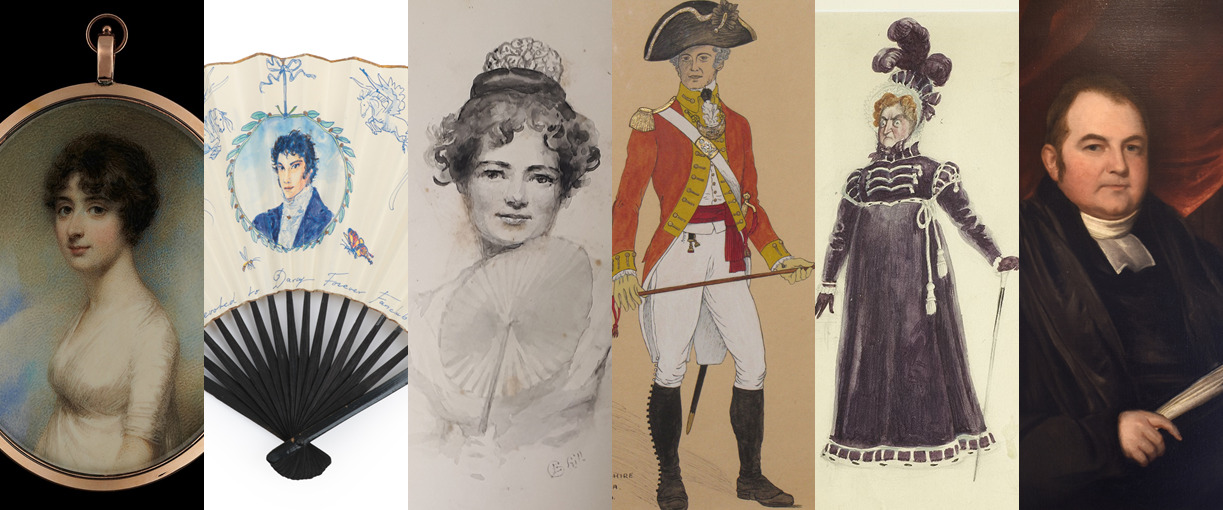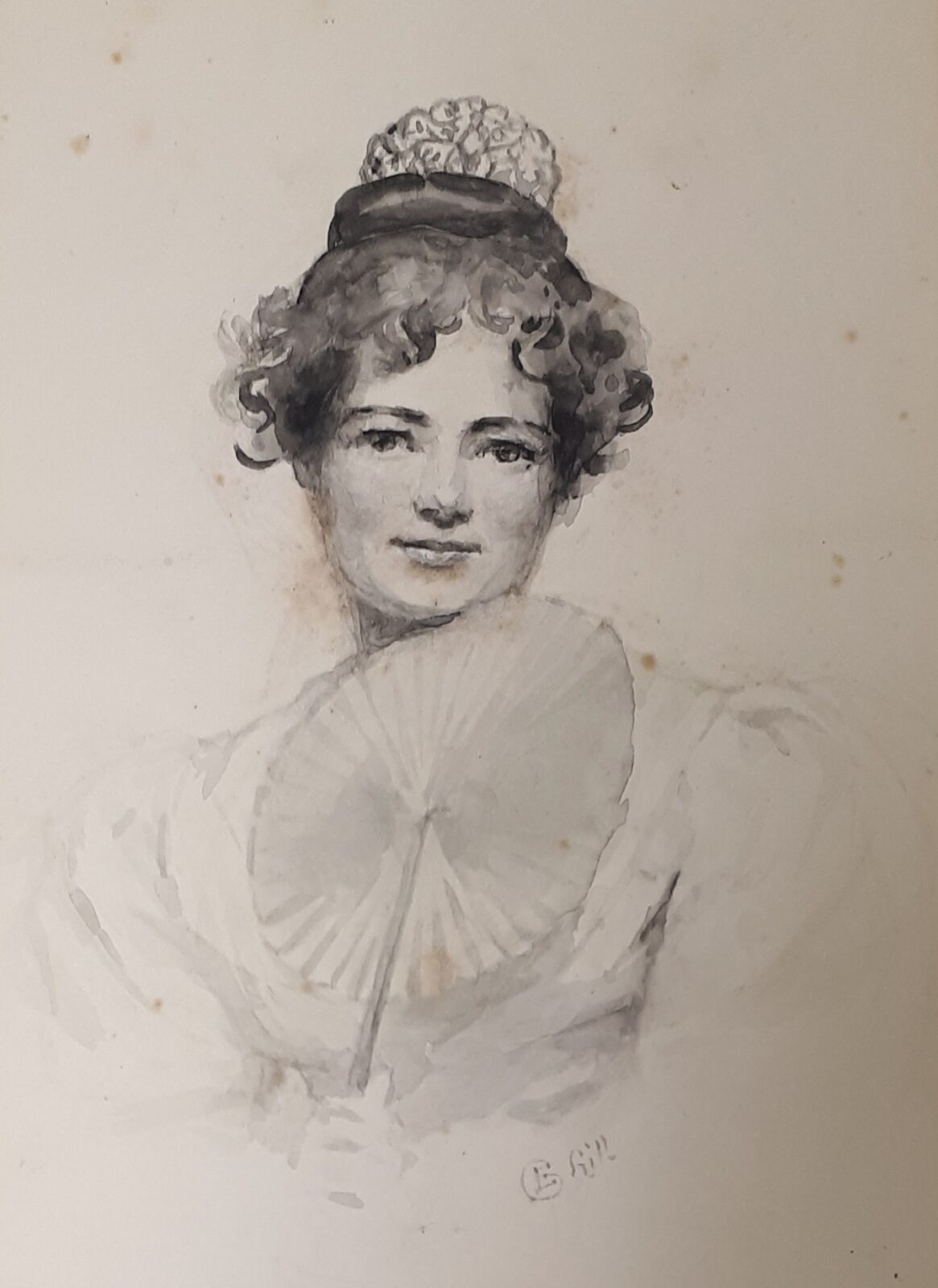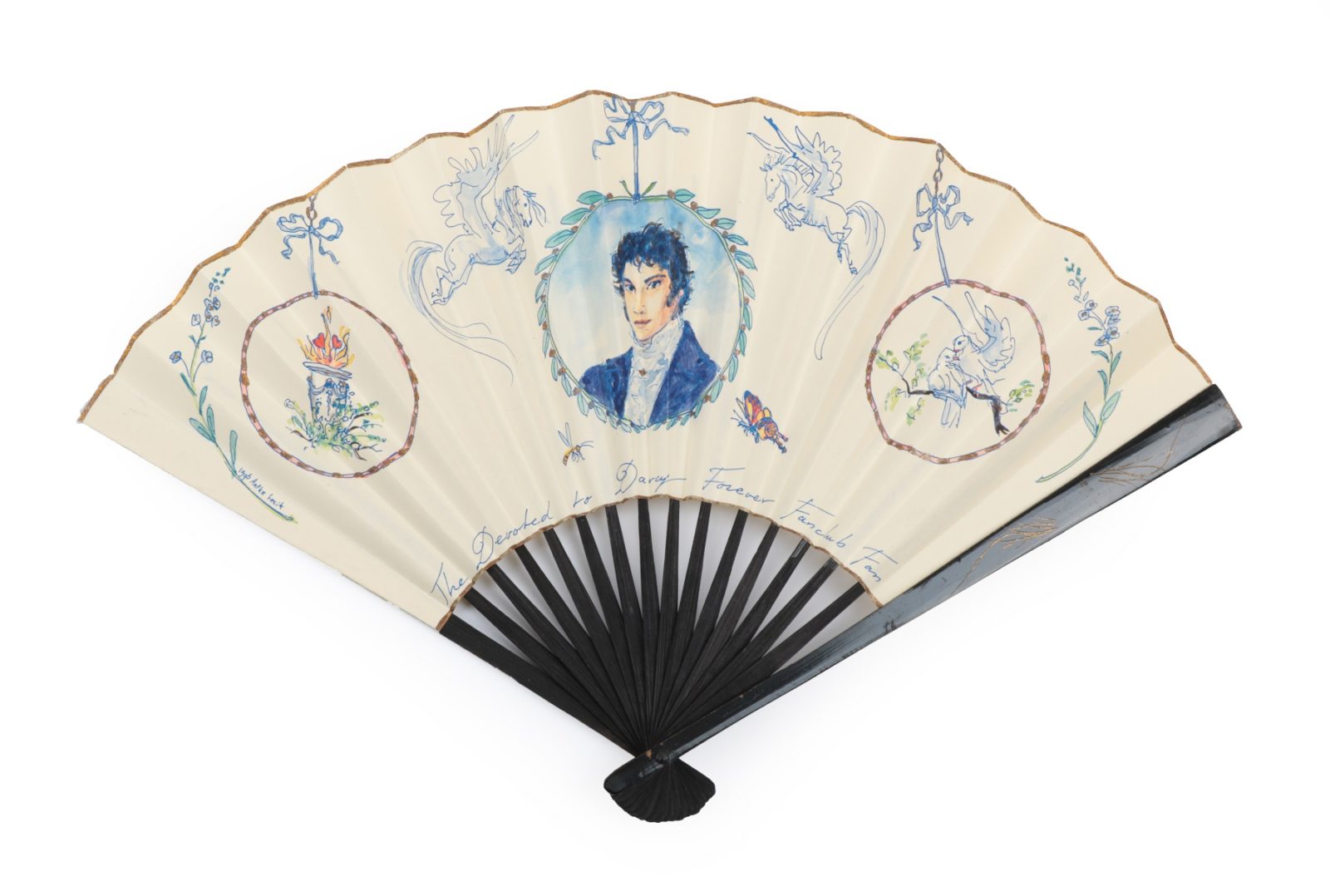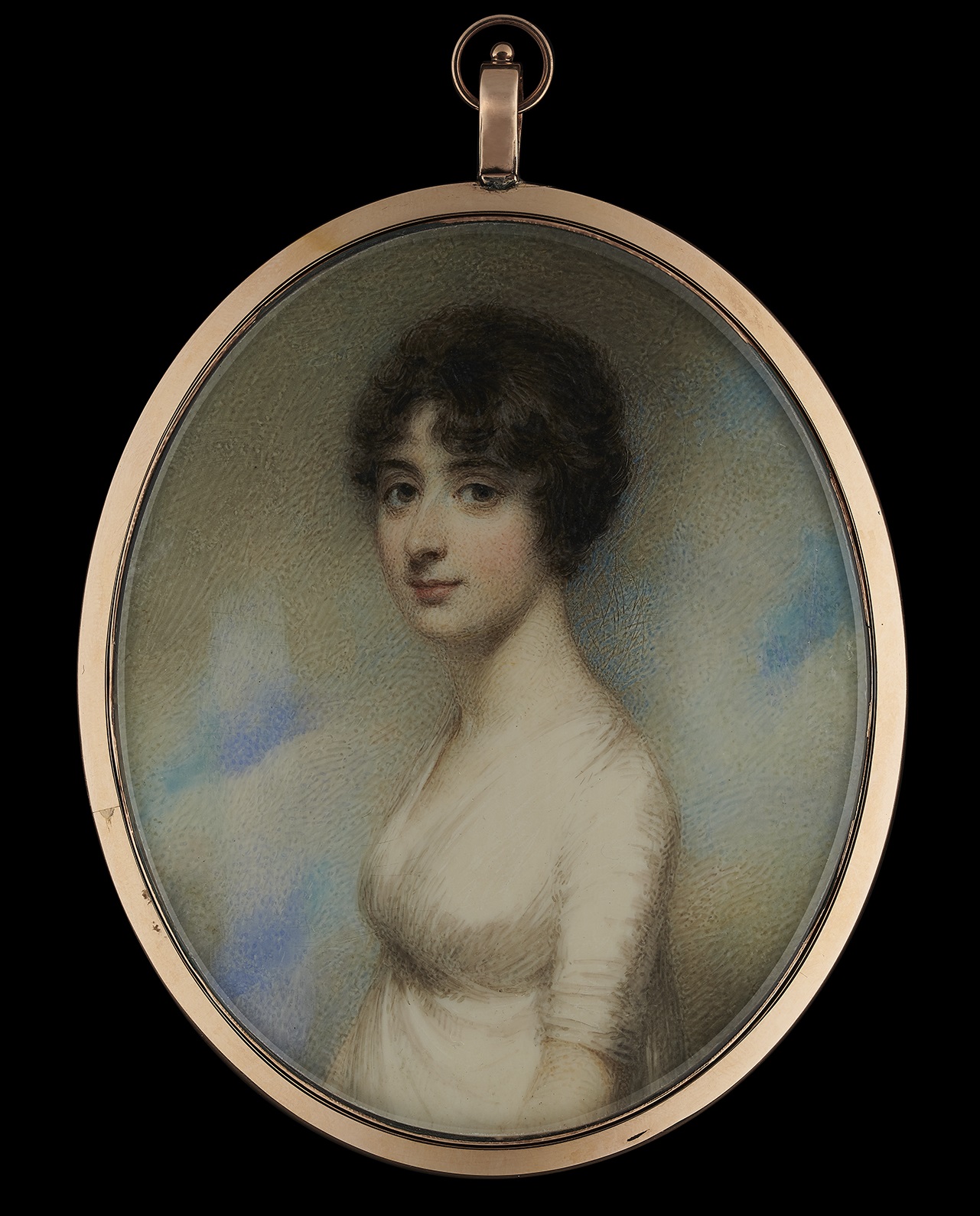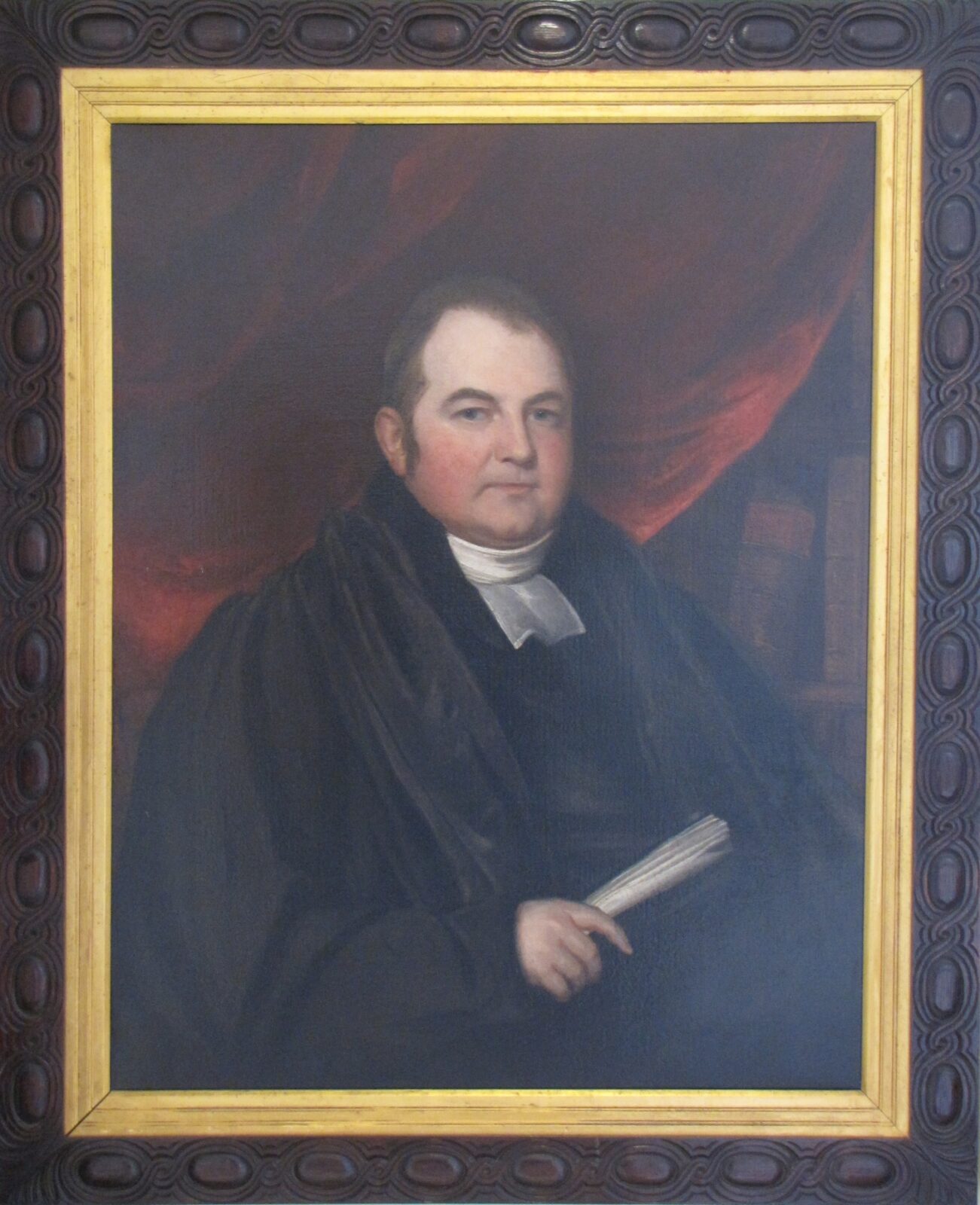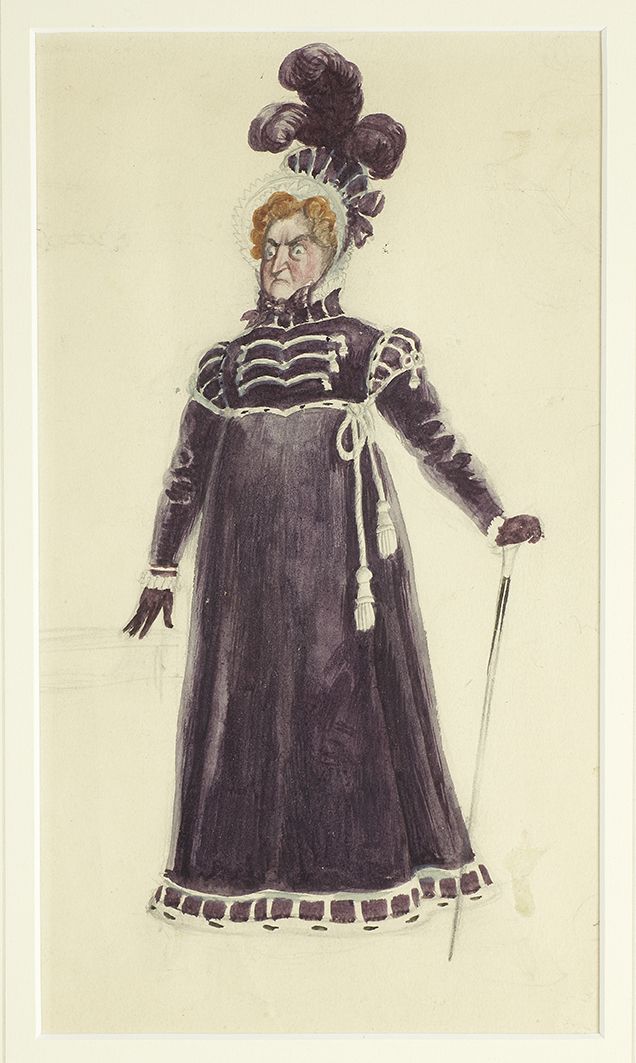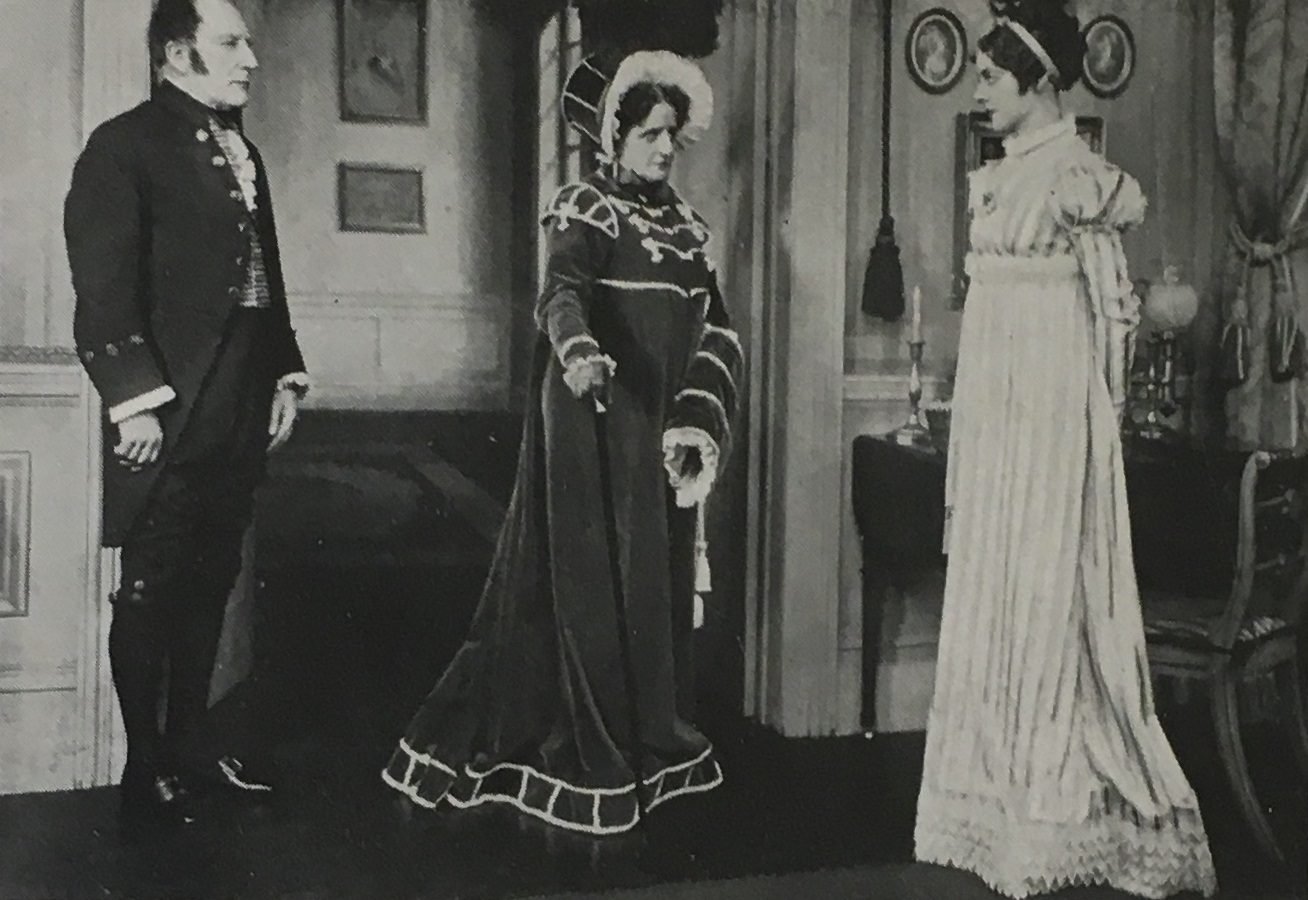Pride & Prejudice Day: exploring characters and objects
Pride & Prejudice was first published on 28 January 1813 - an event we celebrate on that day each year. This month, as we look forward to Pride & Prejudice Day, we explore some of our favourite characters from the novel and related objects in the Museum collection…Elizabeth Bennet
Object: Original sepia illustration by Ellen G. Hill
‘I have been meditating on the very great pleasure which a pair of fine eyes in the face of a pretty woman can bestow.’
This drawing by Miss Ellen G. Hill depicts the artist’s conception of Elizabeth Bennet, whom Jane Austen herself described as ‘as delightful a creature as ever appeared in print’.
Ellen Hill was an artist working in the early twentieth century. She illustrated her sister Constance Hill’s book Jane Austen, Her Homes & Her Friends (1902), and also designed the oak plaque on the wall of Chawton Cottage, erected in 1917 to commemorate the centenary of Jane Austen’s death.
This drawing was inspired by Hill’s niece, Mrs Alcock, who later gave the drawing to the Museum.
Mr Darcy
Object: “The Devoted to Darcy Forever Fan Club Fan”
This lovely fan was hand painted by the Dutch artist Aafke Brouwer, and is dated 1996.
It was clearly inspired by the BBC adaptation of Pride & Prejudice, which first aired on British TV in 1995 and changed the Jane Austen world forever! The series was hugely popular, attracting 11 million viewers and kick-starting a phenomenon the media called ‘Austenmania’.
Mr Darcy, played by Colin Firth, attracted particular attention for the infamous ‘Lake Scene’…
Lydia Bennet
Object: Portrait of Mary Pearson by William Wood, c. 1798.
This portrait miniature by William Wood shows Miss Mary Pearson, a young lady who was briefly engaged to Jane’s brother Henry in 1796, whilst he was serving in the Militia.
Jane met Mary in the summer of 1796, around the time that she began writing Pride and Prejudice, and certainly noted the attraction of military men to vulnerable young women.
As a young, pretty girl who jumped into a short-lived engagement with a dashing young soldier, it has been suggested that Mary Pearson may have been an inspiration for the character of Lydia, the novel’s ‘most determined flirt’.
Mr Wickham
Object: Drawing of an Officer in Captain’s Uniform of the Oxfordshire Militia c.1800, by Joan Corder
This illustration shows the uniform of the Oxfordshire Militia, Jane’s brother Henry’s regiment, but it also gives us a good idea of what the militia that arrived in Meryton might have looked like. It might as well be a portrait of Wickham!
Pride & Prejudice is full of soldiers. Kitty and Lydia are swooning the moment they catch side of a ‘red coat’ and even sensible Lizzy isn’t immune.
Mrs Bennet also reminisces fondly about the soldiers she knew in her youth: ‘I remember the time when I liked a red coat myself very well—and, indeed, so I do still at my heart’.
Mr Collins
Object: Oil painting of Rev. Edward Cooper
Rev. Edward Cooper was Jane Austen’s cousin. He was an Evangelical Anglican clergyman, known for writing sermons and hymns – as shown in his portrait: you can see a roll of sermons in his hand.
He had a reputation for being tactless and unsympathetic, and Jane doesn’t seem to have liked him very much. On the death of her sister-in-law, Elizabeth Knight, in October 1808, she wrote to Cassandra: ‘I have written to Edw Cooper, and hope he will not send one of his letters of cruel comfort to my poor brother’.
In Pride & Prejudice, Mr Collins writes just such a letter to Mr Bennet, about Lydia’s elopement:
‘I am truly rejoiced that my cousin Lydia’s sad business has been so well hushed up, and am only concerned that their living together before the marriage took place should be so generally known. I must not, however, neglect the duties of my station, or refrain from declaring my amazement at hearing that you received the young couple into your house as soon as they were married. It was an encouragement of vice; and had I been the rector of Longbourn, I should very strenuously have opposed it. You ought certainly to forgive them, as a Christian, but never to admit them in your sight, or allow their names to be mentioned in your hearing.’
Lady Catherine de Bourgh
Object: Costume design by Rex Whistler, 1936
This costume design for Lady Catherine de Bourgh was designed by Rex Whistler for the 1936 stage adaptation of Pride and Prejudice directed by Gilbert Miller, at St James’ Theatre, London.
Lady Catherine was played by Eva Moore, one of the best-known actresses of her day.
Whistler designed set and costumes for the production. In this pen, ink and watercolour sketch he shows Lady Catherine de Bourgh in a ‘highly incensed’ mood, as she visits Elizabeth at Longbourn to warn her off marrying Mr Darcy. She wears a stately purple ensemble of coat, gloves and high plumed bonnet. The photograph of the production below shows her in action!
“Obstinate, headstrong girl! I am ashamed of you! Is this your gratitude for my attentions to you last spring? Is nothing due to me on that score? Let us sit down. You are to understand, Miss Bennet, that I came here with the determined resolution of carrying my purpose; nor will I be dissuaded from it. I have not been used to submit to any person’s whims. I have not been in the habit of brooking disappointment.”
~
If you’re looking forward to Pride & Prejudice Day this year, check out our online P&P Day events and check back soon for more P&P Day news!
